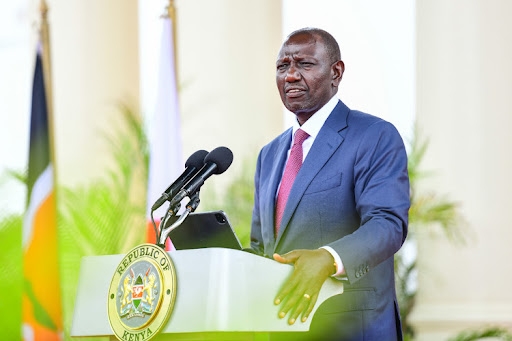The Kenya National Qualifications Authority plays a crucial role in coordinating and harmonising education and training levels.
At the core of one of its mandate is the development of the Kenya National Qualifications Classification Standard designed to create a standardised system for coding national qualifications awarded in the country by various institutions.
This is in response to the diverse nomenclatures and codes used by education and training providers in Kenya.
This classification standard is under review by various stakeholders under the leadership of KNQA. The stakeholders include Technical and Vocational Education and Training Authority, National Industrial Training Authority, Ministry of Education, State Department of Early Childhood and Basic Education and Directorate of Quality Assurance and Standards Unesco’s Institute of Statistics.
Others are the Kenya Institute for Curriculum Development, Technical and Vocational Education and Training Curriculum Development, Assessment and Certification Council and Ministry of Labour, among others.
The move is to align with the International Standard Classification of Education and categorises programmes and their resulting qualifications using three key variables: fields of education and training, KNQF levels and levels of educational completion.
The rationale behind KNQCS stems from the need for a standardised national system, addressing the challenges posed by varied coding methods.
The purpose is clear: to facilitate smooth mobility, comparability and recognition of qualifications within Kenya and globally.
KNQCS aims to classify education and training programmes based on ISCED fields, ensure clear identification of programmes, foster transparency, enable comparability, enhance education system statistics reporting and promote the mobility of skills and learners.
The standard seeks to covers the coding of all education and training programmes and is intended for various stakeholders, including education institutions, accrediting agencies, curriculum developers and employers.
Anchored on national and international frameworks such as the 2010 Constitution, Kenya Vision 2030 and the KNQF Act No. 22 of 2014, KNQCS aligns with global commitments like the UN Sustainable Goal 4 and the African Continental Qualifications Framework.
Effective naming and coding of qualifications are pivotal for categorisation, recognition and communication. KNQCS prescribes guidelines for the nomenclature of programmes, ensuring relevance, distinctiveness and clarity.
Prerequisites for coding involve mapping programmes with ISCED F-2013, conducting detailed programmes analysis and applying the KNQF. The eight-digit KNQCS code combines elements from ISCED F-2013, KNQF 2014 and ISCED P-2011. It serves to provide a unique identifier for each qualification, enhancing clarity and consistency.
The systematic mapping of KNQF levels to corresponding ISCED levels is a vital process for ensuring consistency and accuracy in the classification of qualifications.
This exercise aims to make Kenyan qualifications internationally recognisable by aligning them with global standards.
The KNQCS is a significant stride towards creating a transparent and standardised classification system for qualifications in Kenya.
By promoting comparability and recognition, both nationally and internationally, it sets the stage for enhanced education mobility and collaboration on a global scale.
The current initial stages focuses on internal and target stakeholders and validation, a crucial step preceding wider stakeholder validation, council approval, publishing and gazettement. This process aims to identify and address any gaps or inconsistencies in the draft standard, ensuring accuracy and appropriateness.
KNQCS seeks to harmonise and standardise the coding and classification of national qualifications, enhancing national and international recognition, comparability and transferability. The standard targets a broad spectrum of stakeholders, including education and training actors, curriculum developers, regulatory agencies, qualification authorities, professional agencies, awarding institutions, assessment agencies, placement agencies, employers and other interested parties.
The writer is the acting director general, Kenya National Qualifications Authority, [email protected]
















